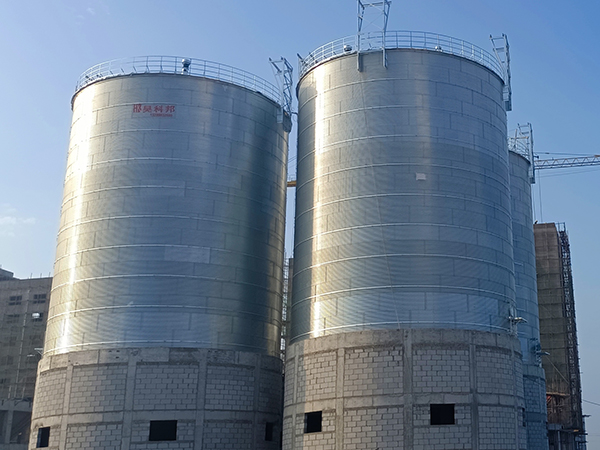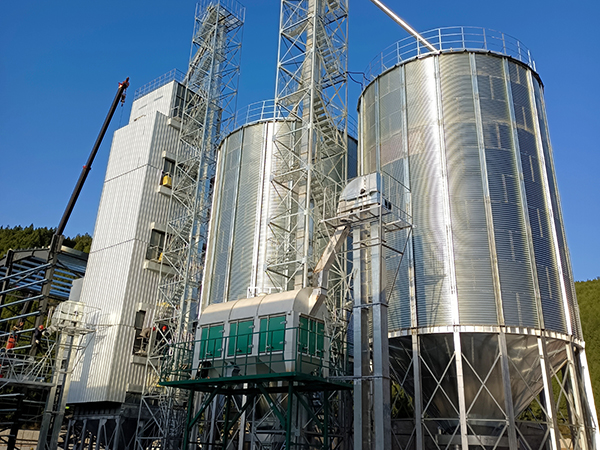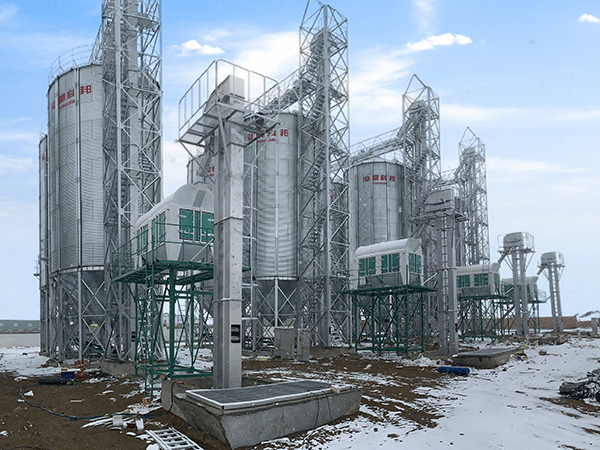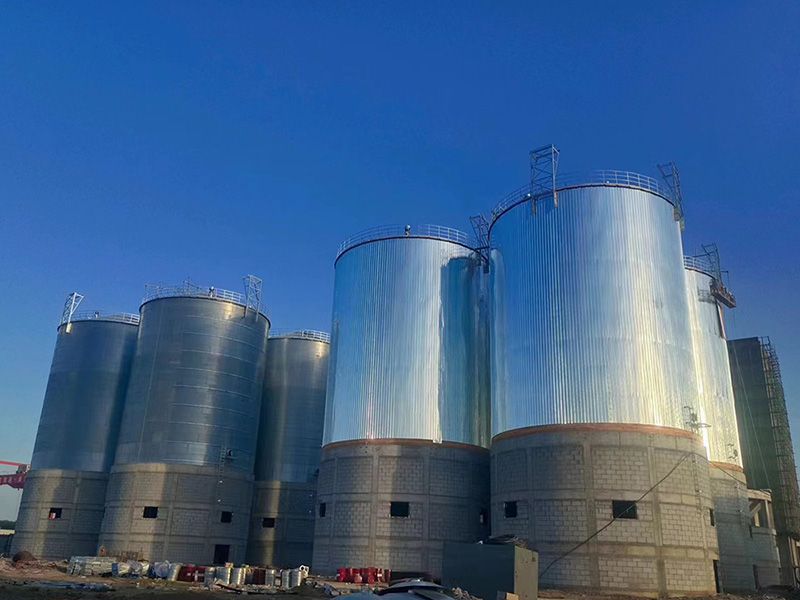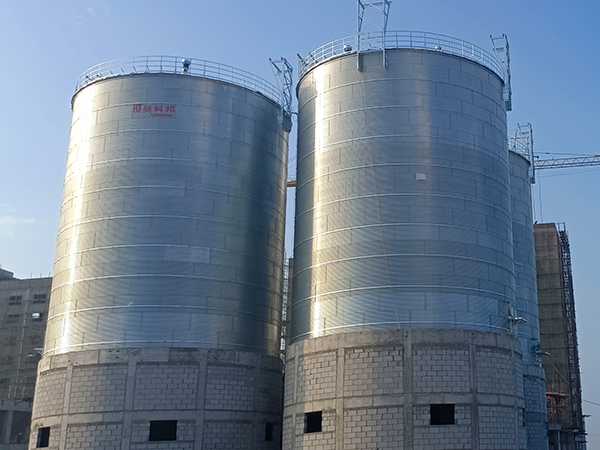10,000-ton silo
A 10,000-ton silo is an industrial-scale storage facility designed for the containment of large quantities of bulk materials, with a capacity of 10,000 tons.
10,000-ton silo Introduction
A 10,000-ton silo is an industrial-scale storage facility designed for the containment of large quantities of bulk materials, with a capacity of 10,000 tons. These silos are commonly utilized in industries such as agriculture, mining, chemical processing, and construction materials for the storage of commodities like grain, cement, ores, fertilizers, and coal. The design and construction of a 10,000-ton silo must take into account various factors, including the properties of the materials, storage requirements, environmental conditions, safety standards, and economic viability.
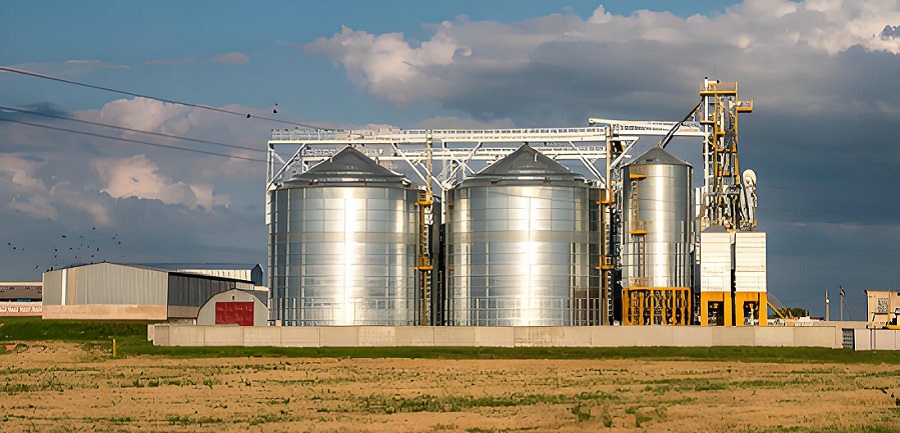
10000-ton Silo features
Large Capacity Storage
The 10,000-ton silo provides ample space for the containment of significant amounts of materials, which is highly beneficial for enterprises requiring large-scale storage.
Structural Stability
Given the need to support immense material weight, the structural design of the silo must be extremely robust, often employing high-strength steel, concrete, or other durable materials for construction.
High Sealing
To prevent moisture damage or contamination from external sources, the top and sides of the silo are typically treated to ensure the stability of the internal environment.
Infeed and Outfeed Systems
To achieve efficient material handling, silos are equipped with advanced infeed and outfeed systems, such as screw conveyors, pneumatic conveying systems, and belt conveyors.
Environmental Control
The silo may feature temperature and humidity control systems to maintain optimal storage conditions for the materials and prevent spoilage or damage.
Safety Measures
Considering the characteristics of the materials, silos incorporate necessary safety measures, such as fire prevention, explosion protection, and dust control, to ensure the safety of the storage process.
Automated Monitoring
Modern silos may integrate automated monitoring systems that provide real-time surveillance of material status and environmental parameters, enhancing management efficiency and response time.
Maintenance and Cleaning
The design of the silo considers the ease of maintenance and cleaning to ensure long-term stable operation and the quality of the materials.
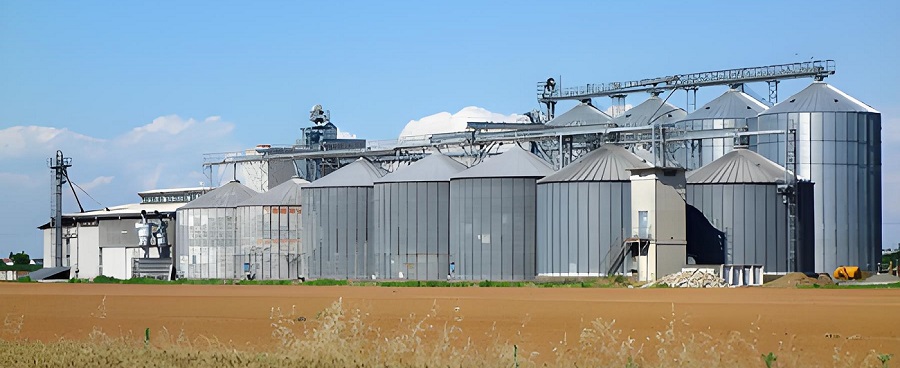
10000-ton Silo structure
Foundation
The silo requires a strong foundation to support the weight of the stored materials and the structure itself. This is typically a reinforced concrete base that extends into the ground to ensure stability and prevent settlement.
Silo Wall (Shell)
The silo’s walls, or shell, are usually made of reinforced concrete or steel, depending on the design and the materials to be stored. The walls must be thick enough to withstand the lateral pressure exerted by the stored material and to resist environmental factors such as wind and seismic forces.
Roof
The roof of the silo is designed to protect the stored materials from weather elements. It can be a flat or domed structure, also made of reinforced concrete or steel, and may include provisions for ventilation or other systems.
Discharge System
For efficient material handling, a 10,000-ton silo typically includes a bottom discharge system, which may consist of a conical hopper, a rotary valve, or other mechanisms to control the flow of materials out of the silo.
Loading and Unloading Facilities
The silo is equipped with inlets for loading materials into the storage and outlets for unloading. These can be designed with conveyor systems, pneumatic conveying, or other mechanical equipment to facilitate the movement of materials.
Support Structures
Depending on the design, the silo may have internal or external support structures such as columns or bracing to enhance its stability and resistance to lateral loads.
Safety Features
Safety is a critical aspect of silo design. This includes features to prevent the buildup of static electricity, which can be a fire hazard in certain materials, as well as systems to monitor the structural integrity of the silo.
Monitoring and Control Systems
Modern silos often incorporate automated monitoring systems for real-time tracking of inventory levels, environmental conditions (such as temperature and humidity), and the structural health of the silo.
Ventilation System
To maintain the quality of the stored materials and prevent spoilage, a silo may include a ventilation system to control the air quality within the storage.
Dust Control
Dust control measures are essential in silo design to prevent the escape of fine particles into the environment and to protect workers’ health.
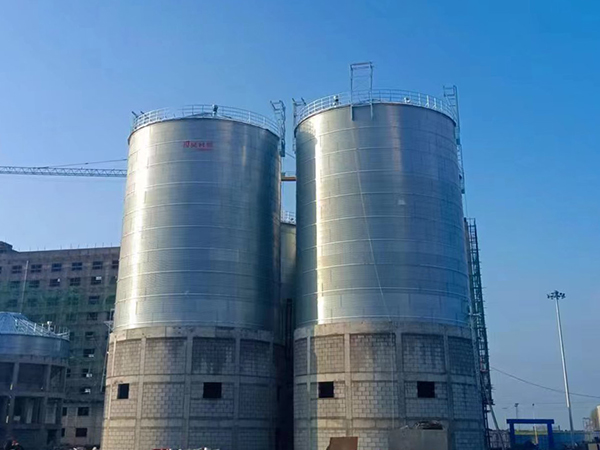
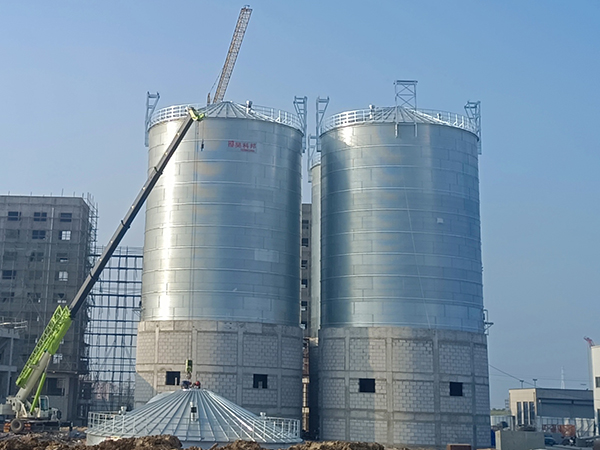
10000-ton Silo Advantages
High-Capacity Storage
A 10,000-ton silo is capable of storing a large volume of materials, which is crucial for large-scale production and logistics operations. This significantly enhances the concentrated storage capability, saving on storage space and costs.
Structural Stability
The design and construction of silos typically utilize high-strength materials such as reinforced concrete or steel, ensuring the stability and durability of the structure. This enables the silo to withstand the weight of the materials and the impact of external environmental factors.
Automation
Modern 10,000-ton silos are often equipped with automated loading and unloading systems and monitoring equipment, which increases operational efficiency, reduces labor costs, and allows for precise material management through automated control systems.
Environmental Control
The interior of the silo can be fitted with climate control systems to protect the stored materials from external climatic conditions, maintaining the optimal storage environment and ensuring the quality and safety of the materials.
Safety
The design of silos takes into account safety factors, including fire prevention, explosion protection, and dust control measures, to ensure the safety of the storage process and reduce the risk of accidents.
Ease of Maintenance
The structural design of the silo considers the convenience of maintenance, making regular inspections, cleaning, and repairs easier, which helps to extend the service life of the silo.
Adaptability
Silos can be custom-designed according to the characteristics of the materials to be stored, adapting to different types of material storage needs, such as pest and mold prevention for grains or corrosion protection for chemical raw materials.
Environmental Friendliness and Energy Efficiency
Contemporary silo designs focus on being environmentally friendly and energy-efficient by optimizing the design to reduce energy consumption, such as using natural ventilation to decrease the need for mechanical ventilation or employing energy-saving lighting and heating equipment.
Space Utilization
The vertical design of the silo effectively utilizes space. Compared to traditional flat warehouses, it achieves high-capacity storage on a smaller footprint.
Multifunctionality
As urban development and industrial transformations occur, some silos can be repurposed for other uses, such as cultural and artistic spaces or commercial facilities, realizing the multipurpose nature and sustainable development of the structures.
Application scope of 10000-ton Silo
Coban Silo is widely used for grain storage such as wheat, corn, soybean, paddy, rice, soybean meal, barley, malt, sunflower seeds, rapeseed, peanuts, flour, and other powder materials, oat, special Silo, and seeds, etc.

10000-ton Silo technical parameters
Scientifically speaking, the Silo capacity should be measured with volume (m3). Even in the same grain Silo, the storage tons will be different for different grains with different densities. The following table is calculated based on a Silo density of 0.75kg/m3, and surely HKB customizes Silo systems unique for you.
| Most Popular Hopper Bottom Steel Silo Technical Specifications | ||||||||
| Capacity | 50Ton | 100Ton | 150Ton | 200Ton | 300Ton | 500Ton | 1000Ton | 1500Ton |
| Model | TCZK
03605 |
TCZK
04507 |
TCZK
05507 |
TCZK
06406 |
TCZK
07307 |
TCZK
07313 |
TCZK
11010 |
TCZK
12811 |
| Diameter(m) | 3.667 | 4.584 | 5.500 | 6.417 | 7.334 | 7.334 | 11.000 | 12.834 |
| Total Height(m) | 9.56 | 12.53 | 13.25 | 12.85 | 14.70 | 21.42 | 20.95 | 23.51 |
| Volume(m³)
Density:0.75ton/m³ |
69 | 150 | 222 | 273 | 415 | 699 | 1346 | 2039 |
| Most Popular Flat Bottom Steel Silo Technical Specifications | ||||||||
| Capacity | 1000Ton | 1500Ton | 2000Ton | 2500Ton | 3000Ton | 5000Ton | 8000Ton | 10000Ton |
| Model | TCK
10014 |
TCK
11915 |
TCK
13715 |
TCK
15514 |
TCK
15518 |
TCK
18321 |
TCK
24718 |
TCK
25621 |
| Diameter(m) | 10.084 | 11.918 | 13.750 | 15.584 | 15.584 | 18.334 | 24.751 | 25.668 |
| Total Height(m) | 18.69 | 20.34 | 20.87 | 20.30 | 24.78 | 28.60 | 26.99 | 30.60 |
| Volume(m³)
Density: 0.75ton/m³ |
1335 | 2009 | 2701 | 2467 | 4145 | 6693 | 10879 | 13484 |
After-sale Service
- – HKB provides advanced grain safety storage technology to assure your grain silo 100% quality stability.
- – grain silo Quality guarantee is one year after installation and commissioning or 18 months after leaving China Port. Maturity is the first.
- – 7 days x 24 hours service, within 24 hours reply/solve of any technical issues upon request.
- – Routinely telephone track to remove all might be problems grain silo or issues guarantying the whole system grain silo long-lasting safety and reliability.
- – HKB will consider all other needs like customs clearance, sea delivery, insurance, customs tax benefit plan, documentation, etc. So our respected Users feel so relaxed and easy to get the grain silo system well.

